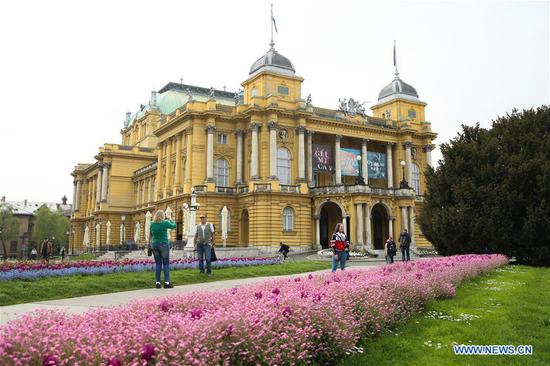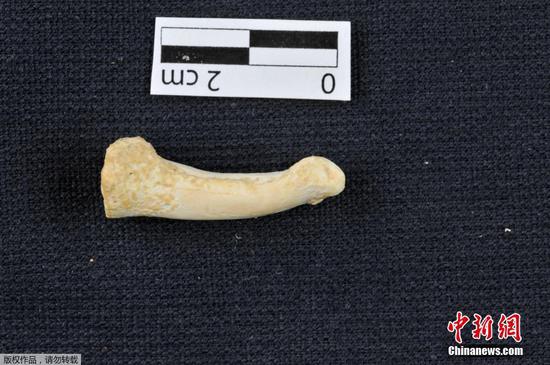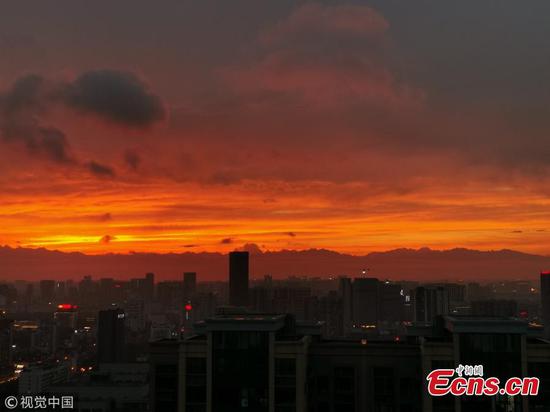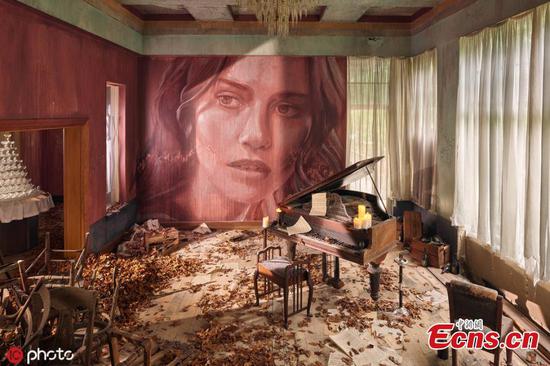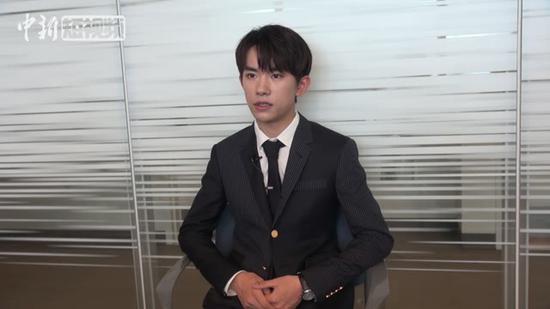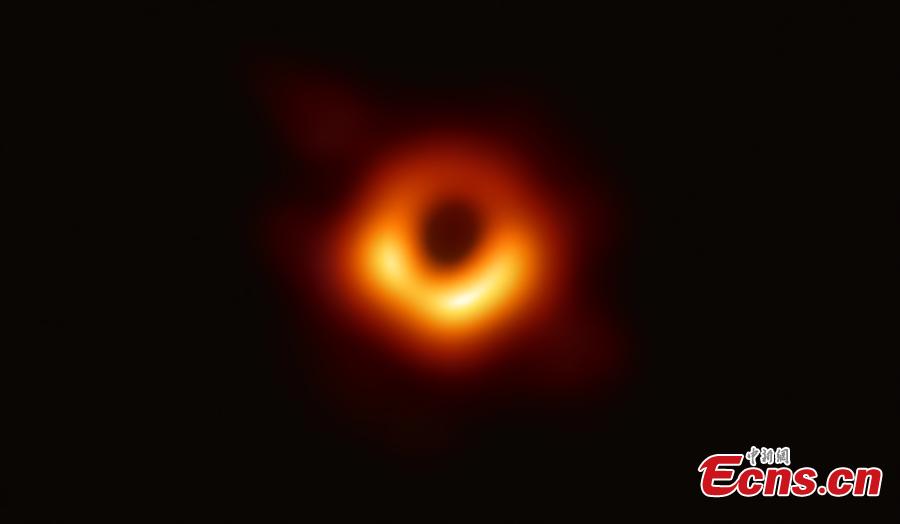
Photo provided by the Event Horizon Telescope (EHT) shows the first image of a black hole. (Photo provided to China News Service)
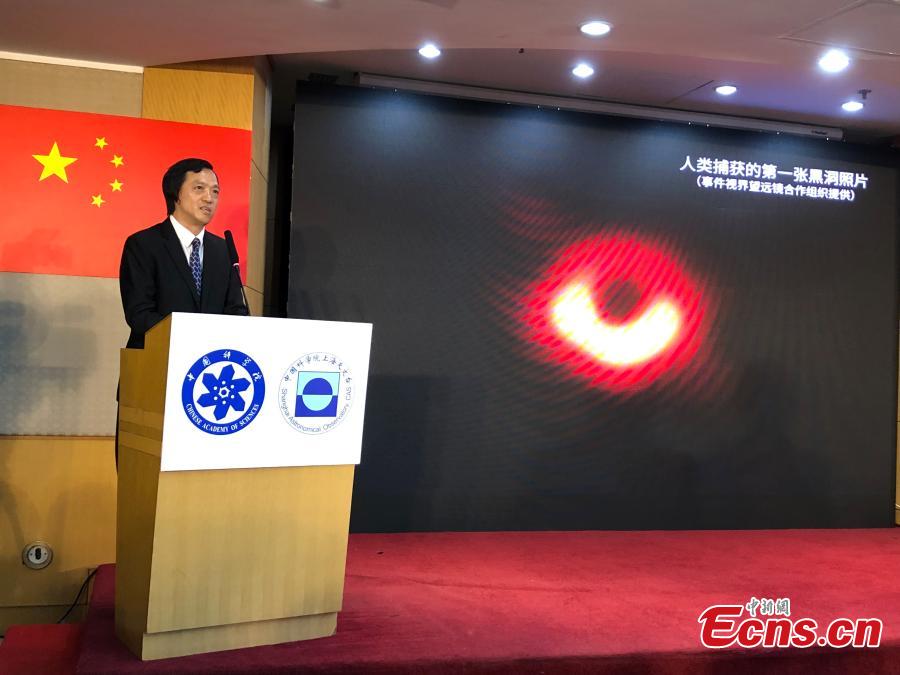
Shen Zhiqiang, head of Shanghai Astronomical Observatory (SAO), presides over a press conference to release the first-ever image of a supermassive black hole at the heart of the distant galaxy M87, in east China's Shanghai, April 10, 2019.The image of the black hole, based on observations through the Event Horizon Telescope (EHT), a planet-scale array of eight ground-based radio telescopes forged through international collaboration, was unveiled in coordinated press conferences across the globe at around 9:00 p.m. (Beijing time) on Wednesday. The landmark result offers scientists a new way to study the most extreme objects in the universe predicted by Albert Einstein's general relativity. (Photo: China News Service/Sun Zifa)
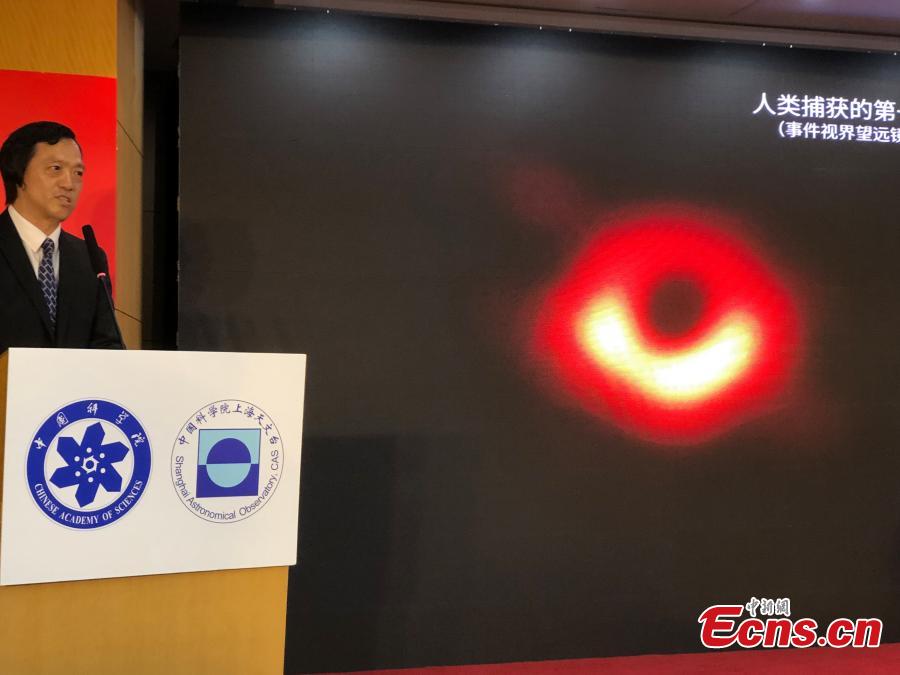
Shen Zhiqiang, head of Shanghai Astronomical Observatory (SAO), presides over a press conference to release the first-ever image of a supermassive black hole at the heart of the distant galaxy M87, in east China's Shanghai, April 10, 2019.The image of the black hole, based on observations through the Event Horizon Telescope (EHT), a planet-scale array of eight ground-based radio telescopes forged through international collaboration, was unveiled in coordinated press conferences across the globe at around 9:00 p.m. (Beijing time) on Wednesday. The landmark result offers scientists a new way to study the most extreme objects in the universe predicted by Albert Einstein's general relativity. (Photo: China News Service/Sun Zifa)
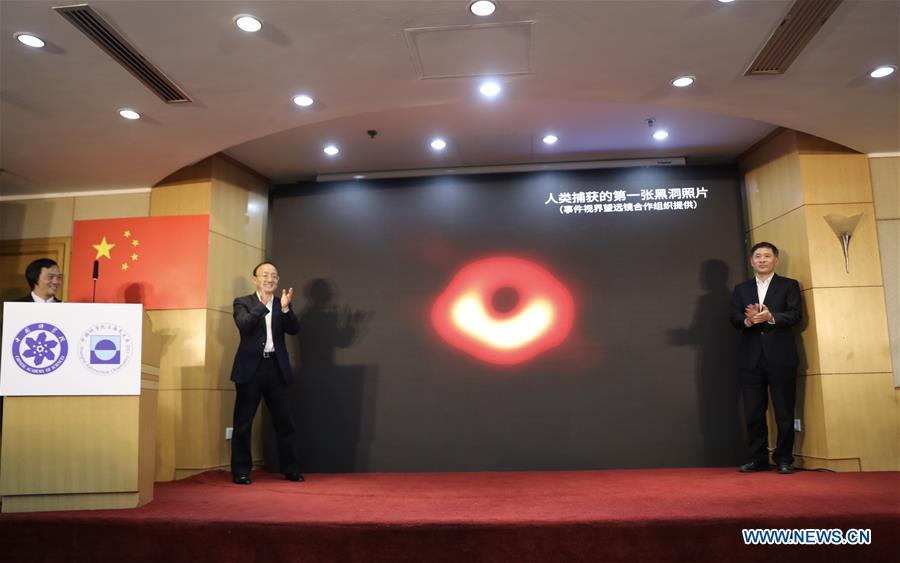
The first-ever image of a supermassive black hole at the heart of the distant galaxy M87 is released during a press conference held by Shanghai Astronomical Observatory (SAO), in east China's Shanghai, April 10, 2019. The image of the black hole, based on observations through the Event Horizon Telescope (EHT), a planet-scale array of eight ground-based radio telescopes forged through international collaboration, was unveiled in coordinated press conferences across the globe at around 9:00 p.m. (Beijing time) on Wednesday. The landmark result offers scientists a new way to study the most extreme objects in the universe predicted by Albert Einstein's general relativity. (Xinhua/Jin Liwang)
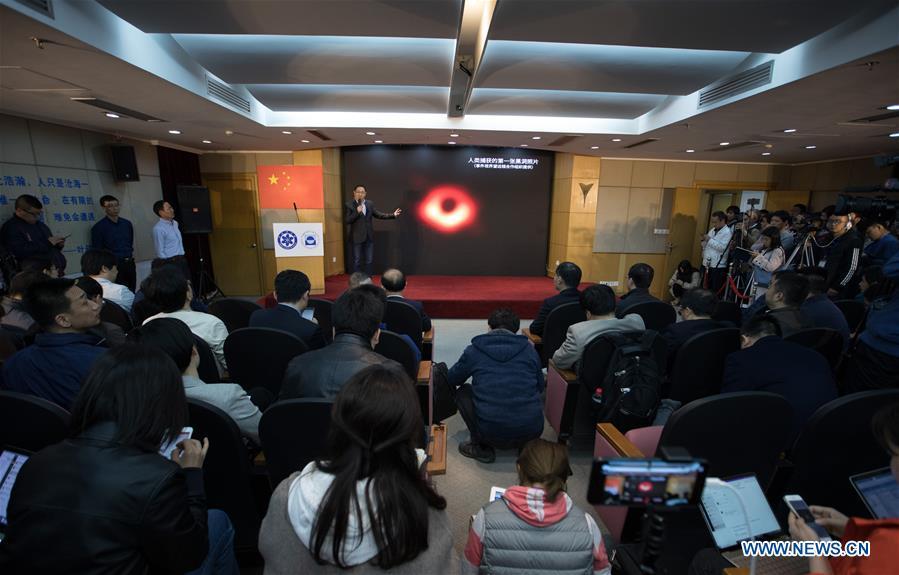
A Chinese astronomer answers questions raised by journalists during a press conference held in Shanghai Astronomical Observatory (SAO), in east China's Shanghai, April 10, 2019. The image of the black hole, based on observations through the Event Horizon Telescope (EHT), a planet-scale array of eight ground-based radio telescopes forged through international collaboration, was unveiled in coordinated press conferences across the globe at around 9:00 p.m. (Beijing time) on Wednesday. The landmark result offers scientists a new way to study the most extreme objects in the universe predicted by Albert Einstein's general relativity. (Xinhua/Jin Liwang)
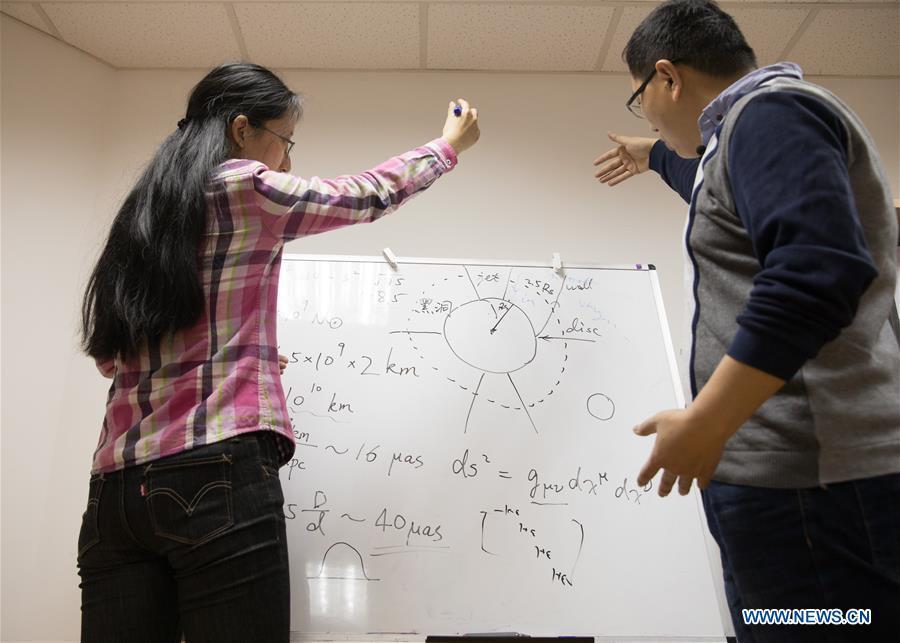
Chinese researchers discuss the imaging methods of the image of a black hole in Shanghai Astronomical Observatory (SAO), in east China's Shanghai, April 9, 2019. The image of the black hole, based on observations through the Event Horizon Telescope (EHT), a planet-scale array of eight ground-based radio telescopes forged through international collaboration, was unveiled in coordinated press conferences across the globe at around 9:00 p.m. (Beijing time) on Wednesday. The landmark result offers scientists a new way to study the most extreme objects in the universe predicted by Albert Einstein's general relativity. (Xinhua/Jin Liwang)
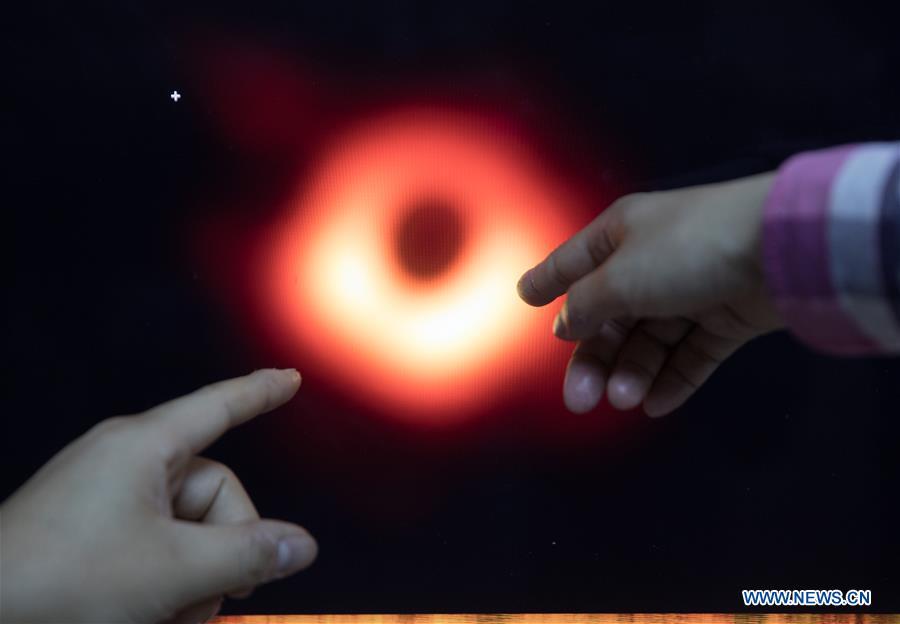
Chinese researchers discuss the imaging methods of the image of a black hole in Shanghai Astronomical Observatory (SAO), in east China's Shanghai, April 9, 2019. The image of the black hole, based on observations through the Event Horizon Telescope (EHT), a planet-scale array of eight ground-based radio telescopes forged through international collaboration, was unveiled in coordinated press conferences across the globe at around 9:00 p.m. (Beijing time) on Wednesday. The landmark result offers scientists a new way to study the most extreme objects in the universe predicted by Albert Einstein's general relativity. (Xinhua/Jin Liwang)

Chinese researchers Lu Rusen (R) and Huang Lei discuss the imaging methods of the image of a black hole in Shanghai Astronomical Observatory (SAO), in east China's Shanghai, April 9, 2019. The image of the black hole, based on observations through the Event Horizon Telescope (EHT), a planet-scale array of eight ground-based radio telescopes forged through international collaboration, was unveiled in coordinated press conferences across the globe at around 9:00 p.m. (Beijing time) on Wednesday. The landmark result offers scientists a new way to study the most extreme objects in the universe predicted by Albert Einstein's general relativity. (Xinhua/Jin Liwang)










